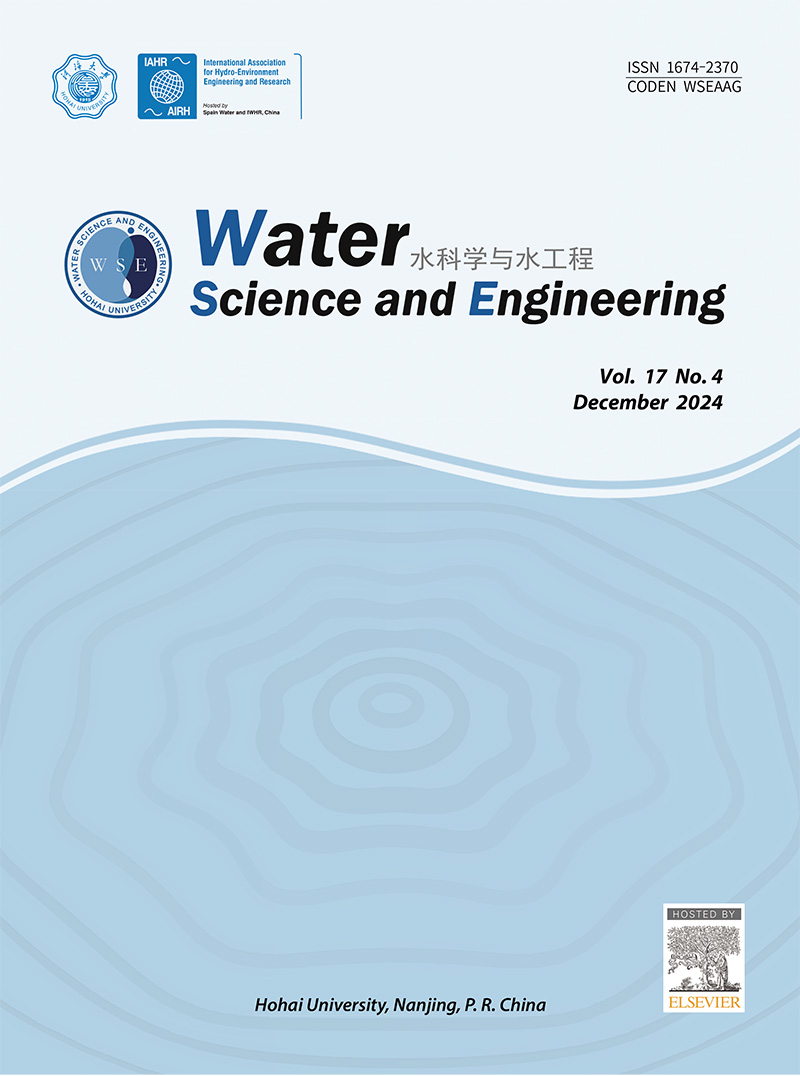Impact of climate change on Kupang River flow and hydrological extremes in Greater Pekalongan, Indonesia
IF 4.3
Q1 WATER RESOURCES
引用次数: 0
Abstract
Located downstream the Kupang Catchment in Indonesia, Pekalongan faces significant land subsidence issues, leading to severe coastal flooding. This study aimed to assess the impact of climate change on future flow regimes and hydrological extremes to inform long-term water resources management strategies for the Kupang Catchment. Utilizing precipitation and air temperature data from general circulation models in the Coupled Model Intercomparison Project 6 (CMIP6) and employing bias correction techniques, the Soil and Water Assessment Tool (SWAT) hydrological model was employed to analyze climate-induced changes in hydrological fluxes, specifically streamflow. Results indicated a consistent increase in monthly streamflow during the wet season, with a substantial rise of 22.8%, alongside a slight decrease of 18.0% during the dry season. Moreover, both the frequency and severity of extremely low and high flows were projected to intensify by approximately 50% and 70%, respectively, for a 20-year return period, suggesting heightened flood and drought risks in the future. The observed declining trend in low flow, by up to 11%, indicated the potential for long-term groundwater depletion exacerbating the threat of land subsidence and coastal flooding, especially in areas with inadequate surface water management policies and infrastructure.
气候变化对印度尼西亚大北加龙根地区古邦河流量和极端水文现象的影响
Pekalongan位于印尼Kupang集水区下游,面临严重的地面沉降问题,导致严重的沿海洪水。这项研究旨在评估气候变化对未来水流状况和水文极端情况的影响,为姑邦流域的长期水资源管理战略提供信息。利用CMIP6耦合模式比对项目(CMIP6)大气环流模式的降水和气温数据,采用偏倚校正技术,利用SWAT水文模型分析了气候引起的水文通量变化,特别是河流流量变化。结果表明,丰水季月流量持续增加,增幅为22.8%,枯水季月流量小幅下降18.0%。此外,在20年的回归期内,极低和极高流量的频率和严重程度预计将分别增加约50%和70%,这表明未来洪涝和干旱风险将增加。观测到的低流量下降趋势高达11%,表明地下水长期枯竭的可能性加剧了地面沉降和沿海洪水的威胁,特别是在地表水管理政策和基础设施不足的地区。
本文章由计算机程序翻译,如有差异,请以英文原文为准。
求助全文
约1分钟内获得全文
求助全文
来源期刊

Water science and engineering
WATER RESOURCES-
CiteScore
6.60
自引率
5.00%
发文量
573
审稿时长
50 weeks
期刊介绍:
Water Science and Engineering journal is an international, peer-reviewed research publication covering new concepts, theories, methods, and techniques related to water issues. The journal aims to publish research that helps advance the theoretical and practical understanding of water resources, aquatic environment, aquatic ecology, and water engineering, with emphases placed on the innovation and applicability of science and technology in large-scale hydropower project construction, large river and lake regulation, inter-basin water transfer, hydroelectric energy development, ecological restoration, the development of new materials, and sustainable utilization of water resources.
 求助内容:
求助内容: 应助结果提醒方式:
应助结果提醒方式:


